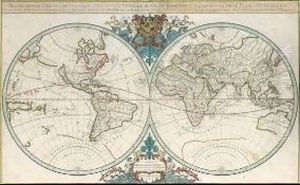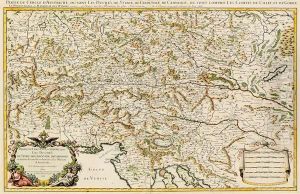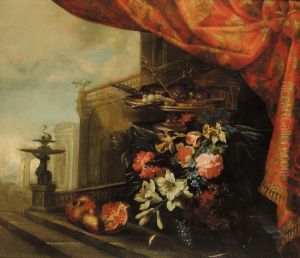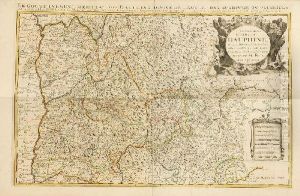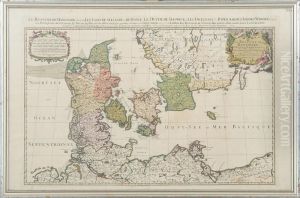Alexis Hubert Jaillot Paintings
Alexis Hubert Jaillot, born in 1632 in Franche-Comté, was a French cartographer and engraver who became one of the most important map publishers of the 17th century. His contributions to cartography are particularly significant as he reinvigorated the geographical works of Nicolas Sanson, the father of French cartography, by enlarging and enhancing them.
Jaillot moved to Paris in the 1650s, where he initially worked as a sculptor and engraver. His transition to cartography was facilitated by his marriage to the daughter of a publisher, which subsequently led to his partnership with the Sanson family. In 1670, he obtained the prestigious office of 'Géographe du Roi' (Geographer to the King), which marked a turning point in his career and solidified his reputation as a respected figure in French cartography.
During his career, Jaillot collaborated with the Sanson heirs to produce the 'Atlas Nouveau', one of the most significant atlases of the era. His maps were known for their accuracy, scale, and aesthetic appeal, featuring elaborate decorations and detailed cartouches. Jaillot's work provided the most up-to-date geographic information available at the time and played a crucial role in disseminating French geographical knowledge throughout Europe.
Jaillot's maps were also re-engraved and republished by other cartographers and publishers, demonstrating their wide appeal and influence. His dedication to updating and improving existing maps ensured that his work remained relevant and in demand throughout his lifetime and beyond. Alexis Hubert Jaillot's legacy in the field of cartography is marked by the continued appreciation and study of his maps by collectors, scholars, and enthusiasts. He passed away in 1712, leaving behind a body of work that remains an important part of the history of mapmaking.
